Code
HCS14989
Weight
100 gm / 0.22 lbs
Size
Height
70cm (28") Width
50cm (20") Material
Cotton Canvas
Availability
Available
Date Added
2018-03-09 12:31:19
Note : We used to sell this product 7 years ago so it may no longer be in our stock.
It is possible that we still have it with our suppliers but the price could be different from before.
Feel free to order. We will verify availability and inform you promptly.
It is possible that we still have it with our suppliers but the price could be different from before.
Feel free to order. We will verify availability and inform you promptly.

Safe Payment
We accept Paypal, Money Transfer, Bank Transfer
Confidence
Protection covers your purchase and personal data.
Worldwide Delivery
We ship Worldwide, except Russia.Shipping cost US$25.2 for upto 0.5 kgs

Hotline
Talk to help line for your question on 9841267335Introduction to Thangka
A thangka, also known as tangka, thanka, or tanka, is a vibrant and intricate Tibetan Buddhist painting that serves as a visual representation of spiritual teachings. Crafted with meticulous detail on cotton or silk appliqué, thangkas depict a wide range of subjects including Buddhist deities, sacred scenes, mandalas, and narrative stories. These sacred artworks are traditionally kept unframed and rolled up for storage, resembling ancient scrolls. To protect their delicate nature, thangkas are mounted on textile backings and often adorned with a silk cover on the front. Proper preservation in dry environments is crucial to maintain the integrity and longevity of the silk. Read More . . .
A thangka, also known as tangka, thanka, or tanka, is a vibrant and intricate Tibetan Buddhist painting that serves as a visual representation of spiritual teachings. Crafted with meticulous detail on cotton or silk appliqué, thangkas depict a wide range of subjects including Buddhist deities, sacred scenes, mandalas, and narrative stories. These sacred artworks are traditionally kept unframed and rolled up for storage, resembling ancient scrolls. To protect their delicate nature, thangkas are mounted on textile backings and often adorned with a silk cover on the front. Proper preservation in dry environments is crucial to maintain the integrity and longevity of the silk. Read More . . .
Brief Introduction :
Vidyadhari, the 'Knowledge Holder', manifests as one of the four principal aspects of Vajrayogini in the Newar Buddhist tradition, where she is commonly known as Bijeshwori Devi, or Akash-yogini, the Sky (Skt. akasha) or Space-going aspect of the goddess Vajrayogini. The Bijeshwori temple in Kathmandu is situated above the western bank of the Bishnumati River on the road to Swayambhu, and its Newar name is derived from Vidhyeshvari, meaning the âWisdom Goddess'. The presiding goddess of this temple is specifically associated with the Indian Mahasiddha Maitripa, who practiced and attained the realization of this flying aspect of Vajrayogini at this site, so she is also known as Maitri-dakini, or Maitri-khechari.
Full Description :The temple of Bahal Bidjeshwori was once at the centre of a great cremation ground that was sacred to Vajravarahi, and its main image was Bhagavani Devi Vidyadhari Viramante, the âDivine Pleasure-giving Knowledge Holder Goddessâ. She is the heart-dakini of Maitripa, who brought this symbol of his realization from India. On the right side of the goddess is Urdhvapada Varahi, with her left leg extended high in the sky to Brahmaloka, and her other foot pressing down upon a golden Maheshvara. On her left side is Vajravarahi (Tib. Dorje Palmo), and then the twelve-year-old virgin form of Vajrayogini as Naropaâs Dakini (Skt. Naro Khechari) or Chakreshvari, the consort of Chakrasamvara.
In the Newar Buddhist tradition the four aspects of Vajrayogini appear as the four âHeart Yoginisâ that form the inner circle of Great Bliss of the Chakrasamvara and Vajravarahi mandalas. These are:
(1) Vajrayogini as Naropaâs Dakini or Naro Khandroma, whose temple is located at Shanku.
(2) Vajravarahi as Indrabhutiâs Dakini, or Indra Yogini, whose temple is located at Guhyeshvari.
(3) The âRaised Footâ form of Vajrayogini, whose temple is located at Pharphing.
(4) Vajrayogini as Akash Yogini or Vidyadhari, whose temple is located at Bijeshwori.
Vidyadhari Vajrayogini is beautiful, playful and lusty, and youthful like a sixteen-year-old. She is the colour of a red hibiscus flower, with three lotus-like eyes, and an expression that combines the sentiments of passion and slight wrath. She is shown leaping into space in the flying posture of a sky-going dakini, with her right leg bent back at the knee, and her right leg extended in âraised footâ (Skt. urdhvapada) posture and held in the crook of her left arm, such that her thighs are fully splayed. Her nubile body is perfect in proportion, with a narrow waist, and firm round breast with aroused nipples.
Her long tresses of black hair flow freely behind her back, and her head is adorned with a golden crown of five jewel-topped and carved white skulls, with loops of bone beads hanging beneath below each little skull. She wears the golden ornaments of jeweled earrings, a heavy neck choker decorated with the serpent-devouring head of a garuda, wide Newar bracelets, armlets, anklets, and finger rings. A golden breast ornament loops around her chest, with small coins hanging from its upper thread, little round bells from its lower thread, with a small endless knot and reliquary box (Tib. gau) joining the threads together between her breasts. From her golden belt hang the sixty-four filigree beaded strands of her bone apron, the joined loops of which are embellished with pendant-emblems of auspicious symbols and swans, with the large pendant near her right knee displaying a small carved image of the goddess Vidyadhari herself. An embellished Newar medallion on a long silver chain swings out behind her neck, and around her shoulders she wears a long garland of dry white skulls that are described as being fifty in number.
Vidyadhari's face is inclined upward to her left as she drinks a stream of fresh blood from the tilted skull-cup she holds in her left hand. Her drinking of blood symbolizes that she is consumed with great bliss, and her inclined posture of flying towards the left represents the importance placed upon 'left-hand rituals' within the yogini or mother-tantra traditions. With her lowered right hand she circles a vajra-handled curved knife towards the ten directions, with her index finger raised in the threatening tarjani gesture, symbolizing that she terrorizes all obstructive demons. Across her left shoulder she carries the golden staff of her tantric-staff or khatvanga, which is equal in height to her own body and represents her male consort, Chakrasamvara. The top of her khatvanga is sealed with a golden crossed-vajra and a nectar vase, the impaled blue head of Bhairava, a freshly severed head, a dry white skull, and a crowning half-vajra. A billowing silk ribbon, and a damaru and bell hang from a chain near the top of the khatvanga's shaft.
In the Newar Buddhist tradition the four aspects of Vajrayogini appear as the four âHeart Yoginisâ that form the inner circle of Great Bliss of the Chakrasamvara and Vajravarahi mandalas. These are:
(1) Vajrayogini as Naropaâs Dakini or Naro Khandroma, whose temple is located at Shanku.
(2) Vajravarahi as Indrabhutiâs Dakini, or Indra Yogini, whose temple is located at Guhyeshvari.
(3) The âRaised Footâ form of Vajrayogini, whose temple is located at Pharphing.
(4) Vajrayogini as Akash Yogini or Vidyadhari, whose temple is located at Bijeshwori.
Vidyadhari Vajrayogini is beautiful, playful and lusty, and youthful like a sixteen-year-old. She is the colour of a red hibiscus flower, with three lotus-like eyes, and an expression that combines the sentiments of passion and slight wrath. She is shown leaping into space in the flying posture of a sky-going dakini, with her right leg bent back at the knee, and her right leg extended in âraised footâ (Skt. urdhvapada) posture and held in the crook of her left arm, such that her thighs are fully splayed. Her nubile body is perfect in proportion, with a narrow waist, and firm round breast with aroused nipples.
Her long tresses of black hair flow freely behind her back, and her head is adorned with a golden crown of five jewel-topped and carved white skulls, with loops of bone beads hanging beneath below each little skull. She wears the golden ornaments of jeweled earrings, a heavy neck choker decorated with the serpent-devouring head of a garuda, wide Newar bracelets, armlets, anklets, and finger rings. A golden breast ornament loops around her chest, with small coins hanging from its upper thread, little round bells from its lower thread, with a small endless knot and reliquary box (Tib. gau) joining the threads together between her breasts. From her golden belt hang the sixty-four filigree beaded strands of her bone apron, the joined loops of which are embellished with pendant-emblems of auspicious symbols and swans, with the large pendant near her right knee displaying a small carved image of the goddess Vidyadhari herself. An embellished Newar medallion on a long silver chain swings out behind her neck, and around her shoulders she wears a long garland of dry white skulls that are described as being fifty in number.
Vidyadhari's face is inclined upward to her left as she drinks a stream of fresh blood from the tilted skull-cup she holds in her left hand. Her drinking of blood symbolizes that she is consumed with great bliss, and her inclined posture of flying towards the left represents the importance placed upon 'left-hand rituals' within the yogini or mother-tantra traditions. With her lowered right hand she circles a vajra-handled curved knife towards the ten directions, with her index finger raised in the threatening tarjani gesture, symbolizing that she terrorizes all obstructive demons. Across her left shoulder she carries the golden staff of her tantric-staff or khatvanga, which is equal in height to her own body and represents her male consort, Chakrasamvara. The top of her khatvanga is sealed with a golden crossed-vajra and a nectar vase, the impaled blue head of Bhairava, a freshly severed head, a dry white skull, and a crowning half-vajra. A billowing silk ribbon, and a damaru and bell hang from a chain near the top of the khatvanga's shaft.


![Akash Jogni, Vidyadhari Thangka [tibetan Style], [painting]](https://handicraftseller.com/uploads/pics/product/thumb/2018/03/14989.jpg)
![Akash Jogni, Vidyadhari Thangka [tibetan Style], [painting]](https://handicraftseller.com/uploads/pics/product/thumb/2018/03/14989_0.jpg)










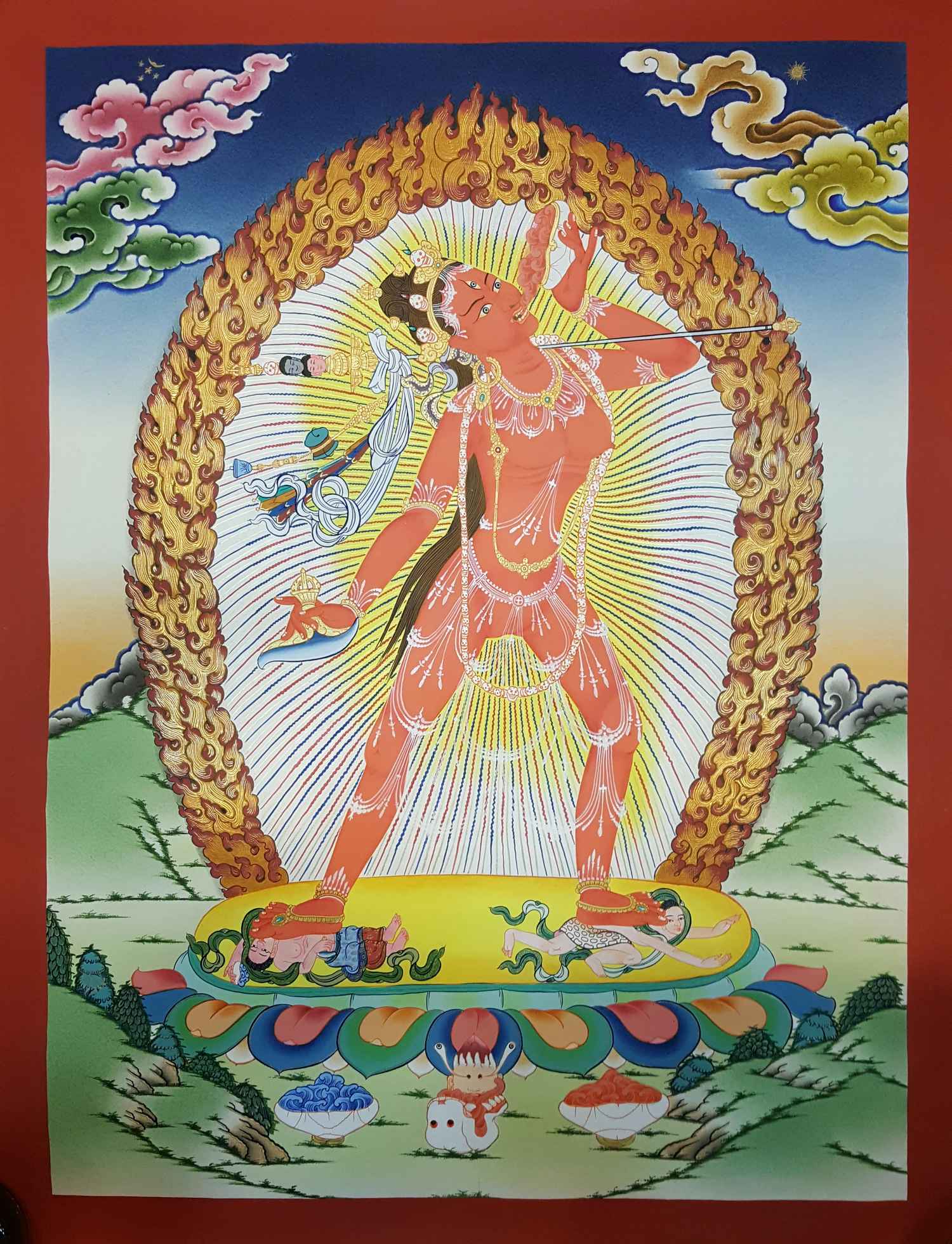 Real Gold" title="Vajra Jogni Hand Painted Tibetan Thangka
Real Gold" title="Vajra Jogni Hand Painted Tibetan Thangka 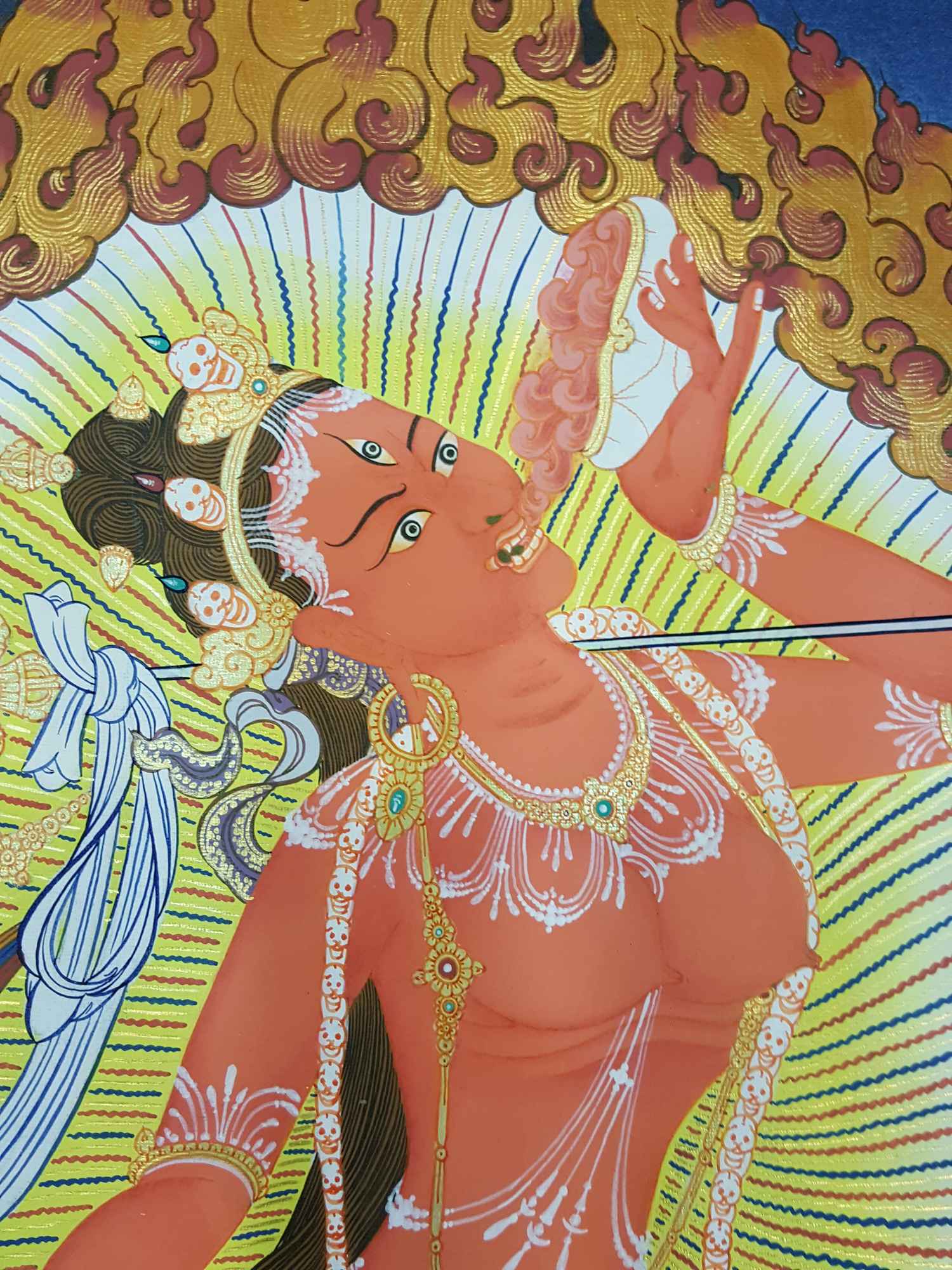 Real Gold" title="Vajra Jogni Hand Painted Tibetan Thangka
Real Gold" title="Vajra Jogni Hand Painted Tibetan Thangka 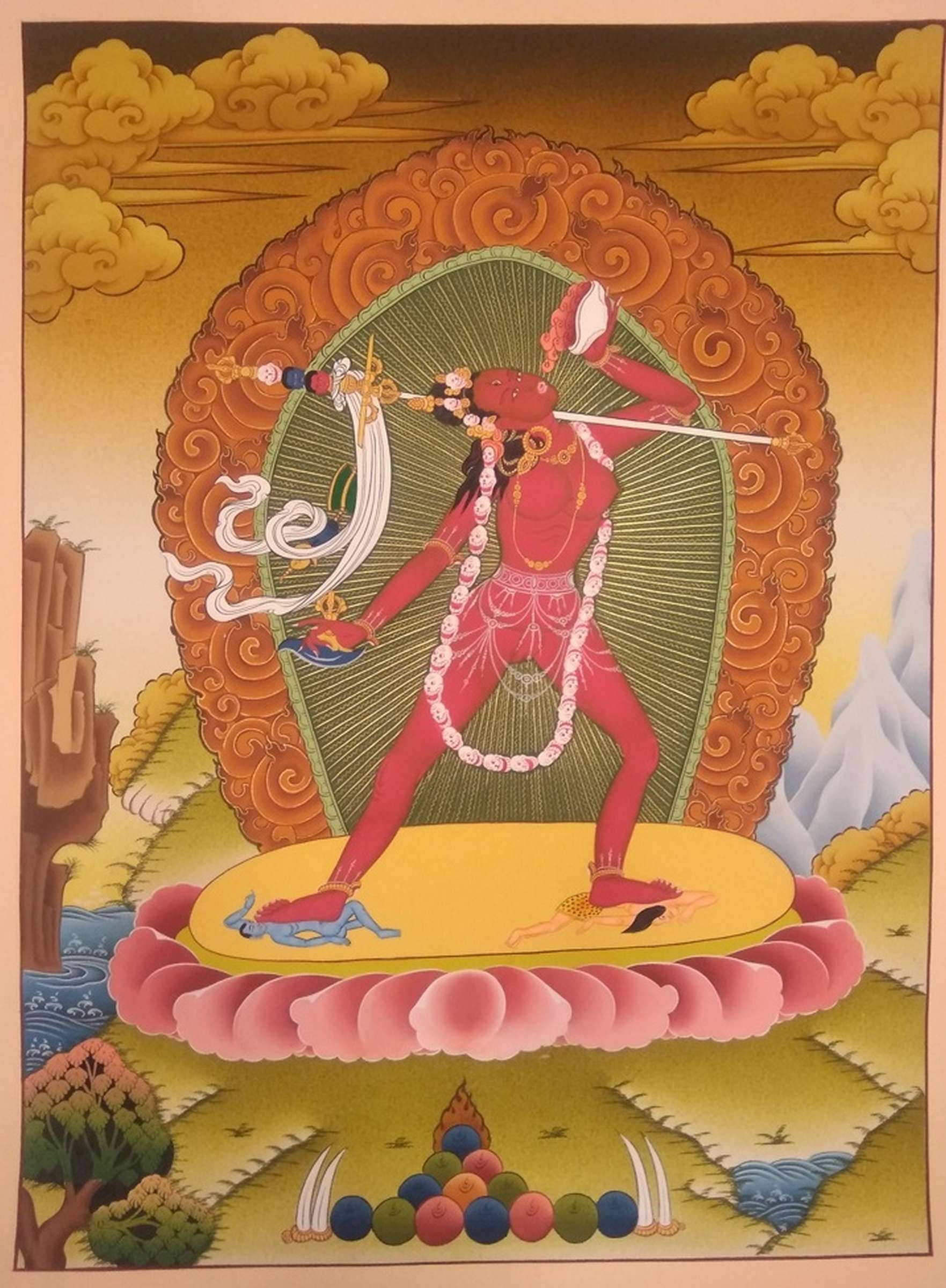 of Vajrayogini
of Vajrayogini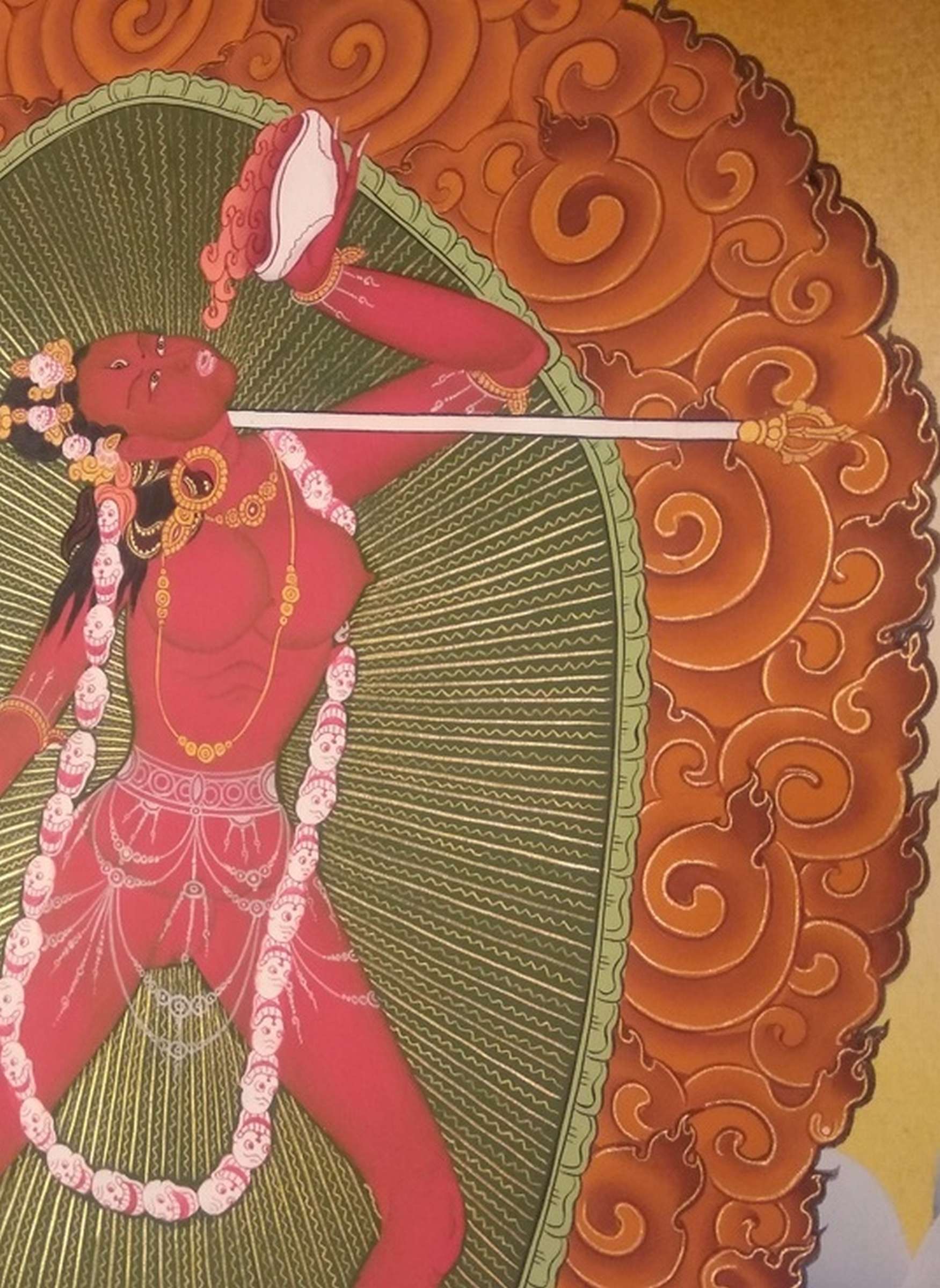 of Vajrayogini
of Vajrayogini of Vajrayogini,traditional Color,
of Vajrayogini,traditional Color,  of Vajrayogini,traditional Color,
of Vajrayogini,traditional Color,  Nairatmya Yogini, Buddhist Traditional Painting, Hand Painted" title="
Nairatmya Yogini, Buddhist Traditional Painting, Hand Painted" title="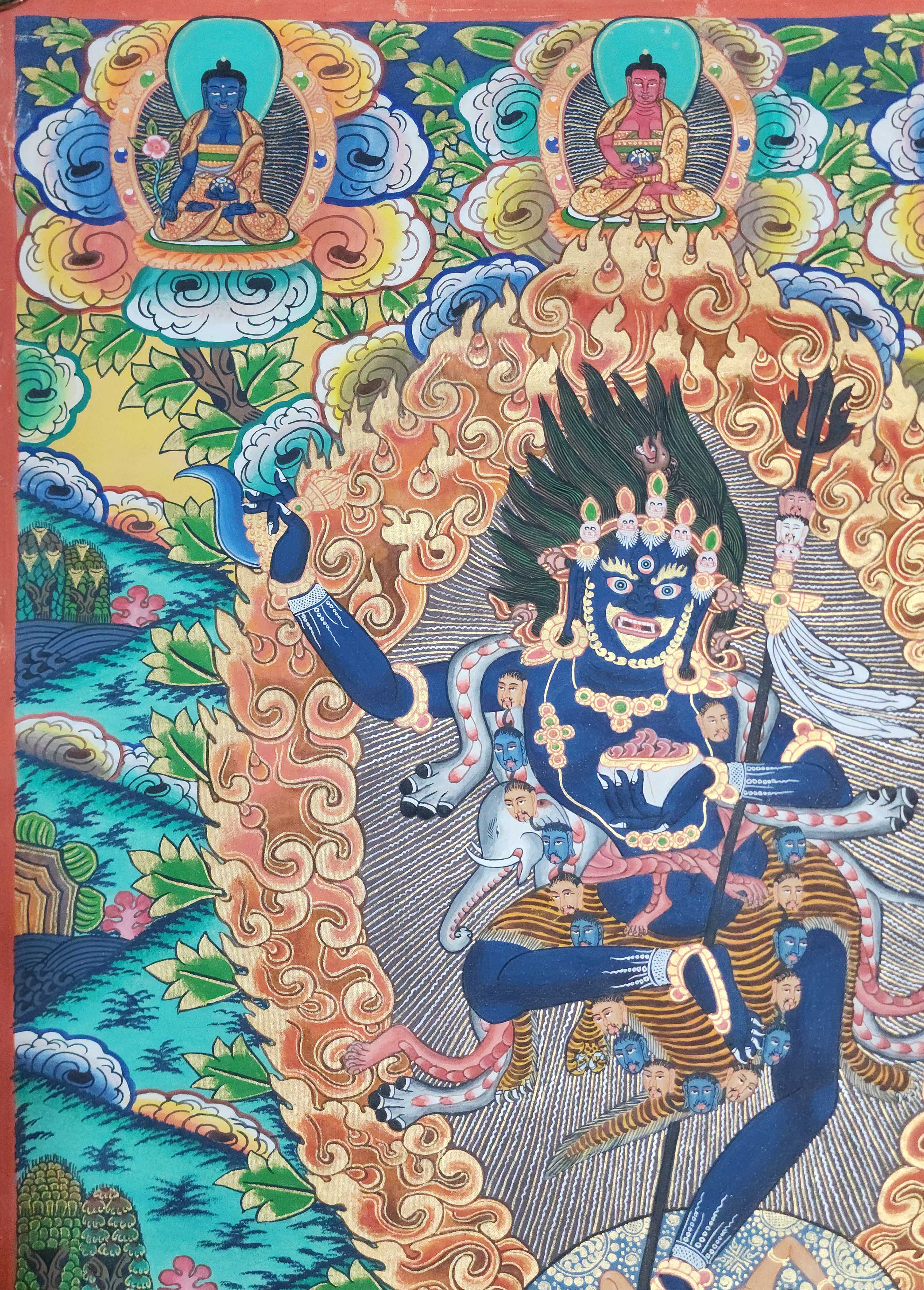 Nairatmya Yogini, Buddhist Traditional Painting, Hand Painted" title="
Nairatmya Yogini, Buddhist Traditional Painting, Hand Painted" title="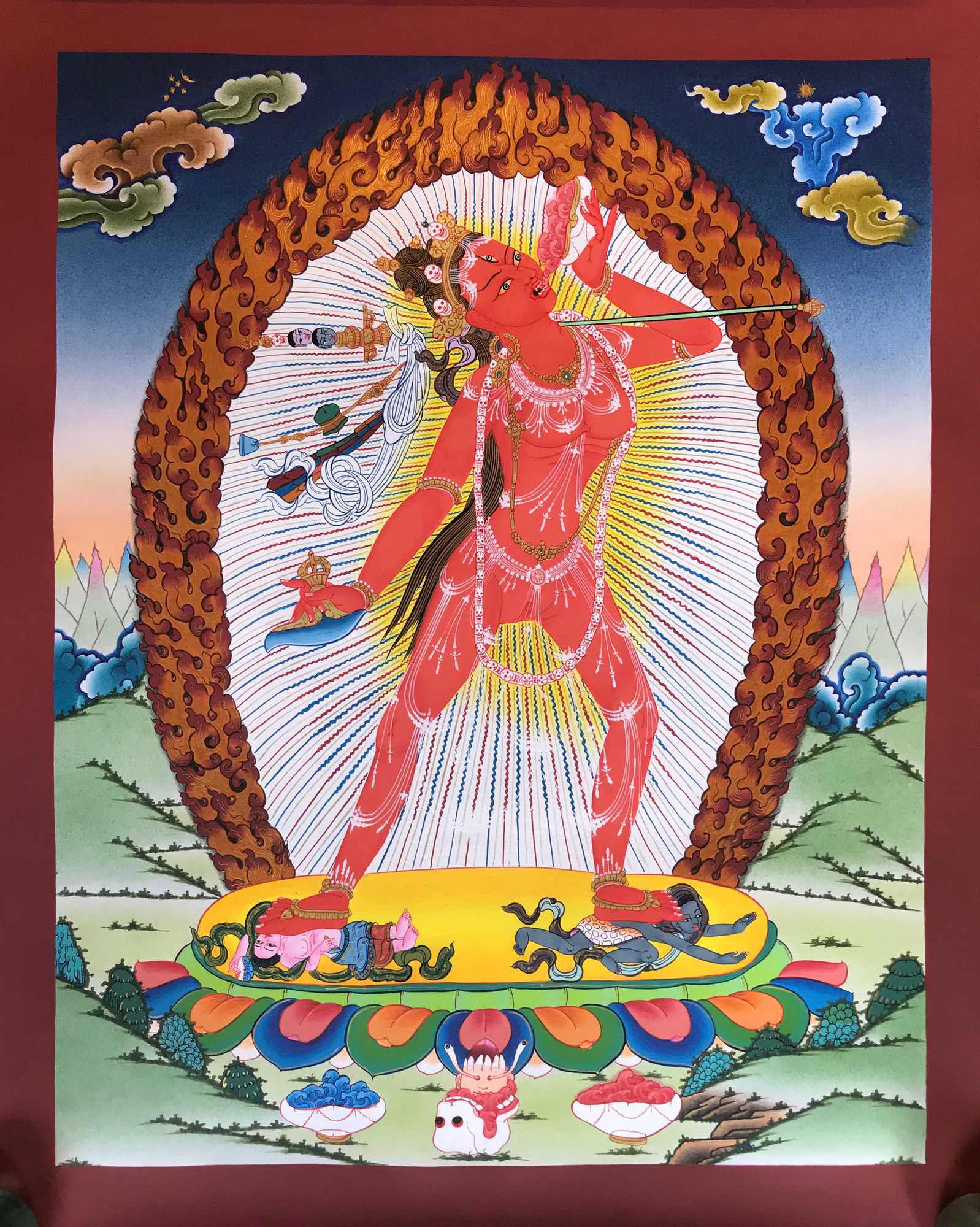 of Vajrayogini,traditional Color,
of Vajrayogini,traditional Color, 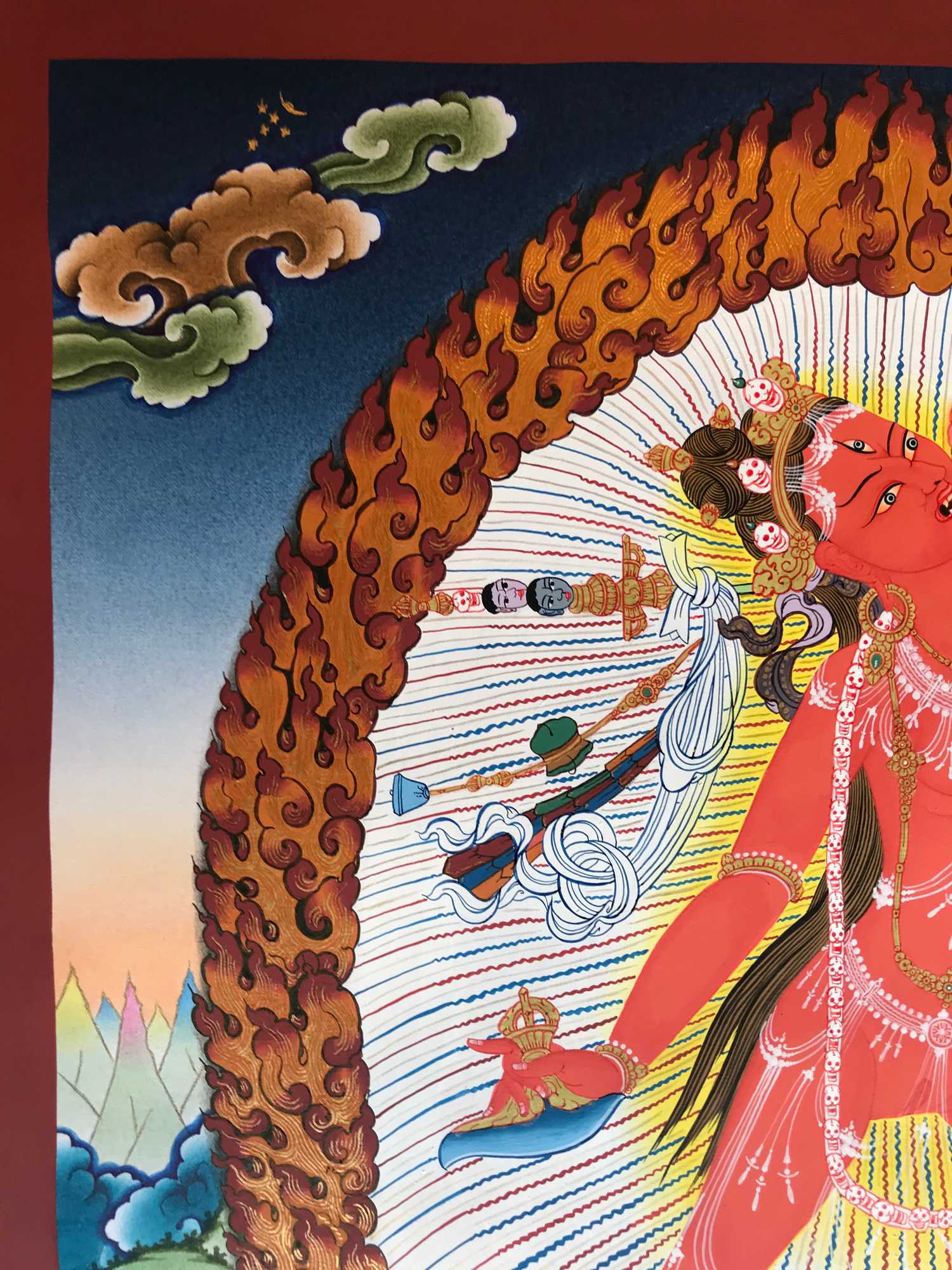 of Vajrayogini,traditional Color,
of Vajrayogini,traditional Color,  of Vajrayogini,
of Vajrayogini, 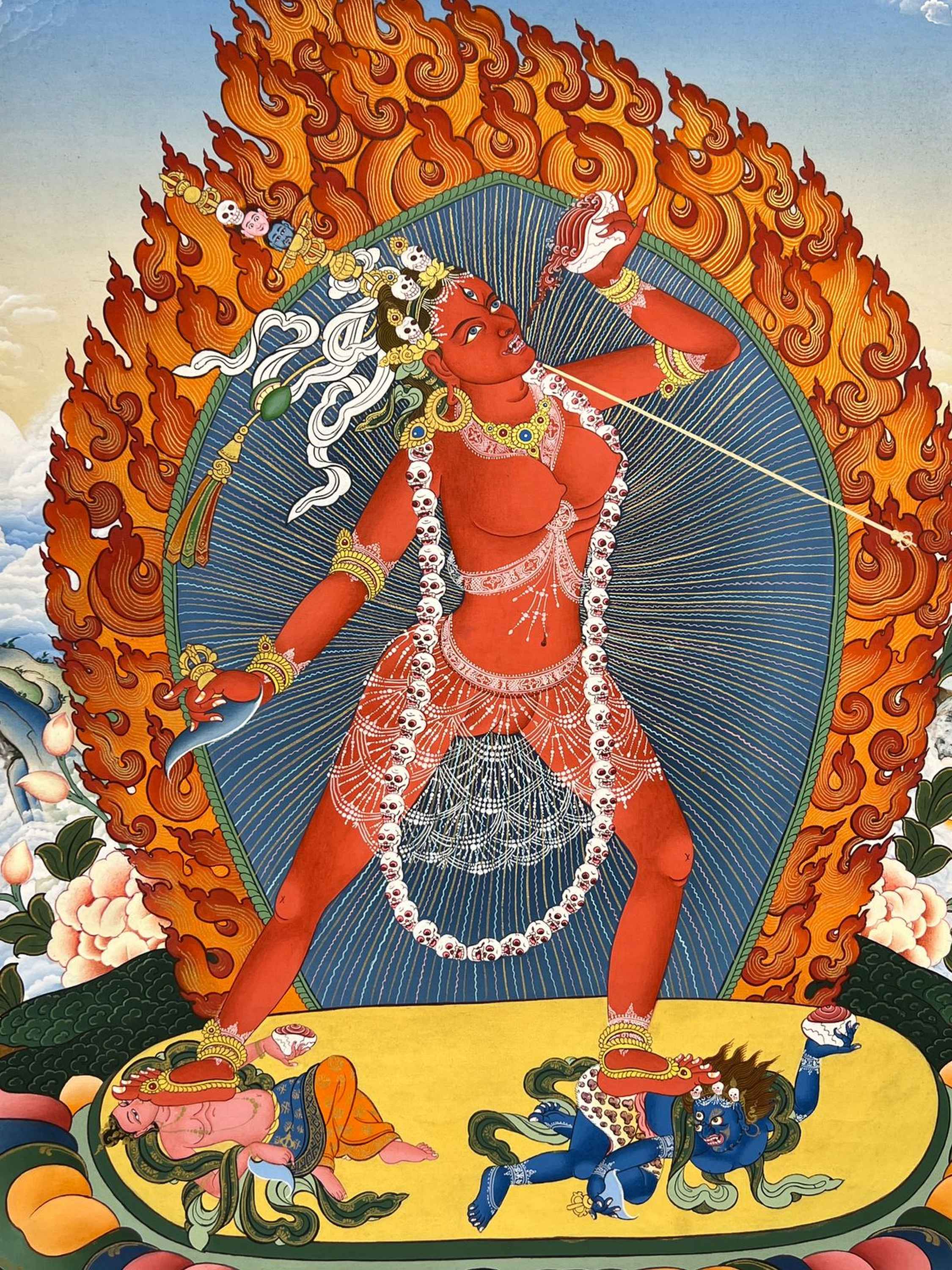 of Vajrayogini,
of Vajrayogini, 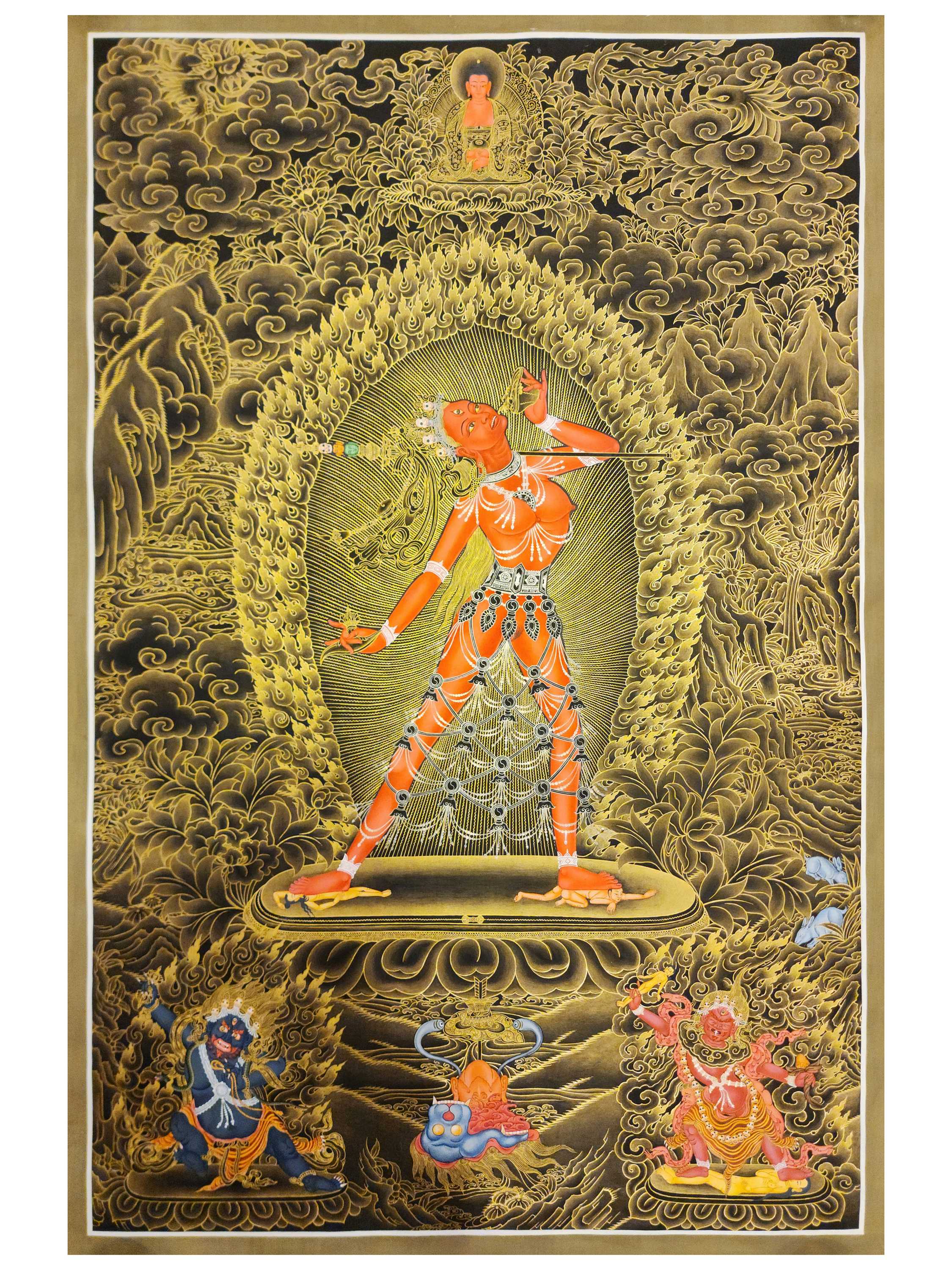 Master Quality, Buddhist Traditional Painting, Tibetan Style,
Master Quality, Buddhist Traditional Painting, Tibetan Style, 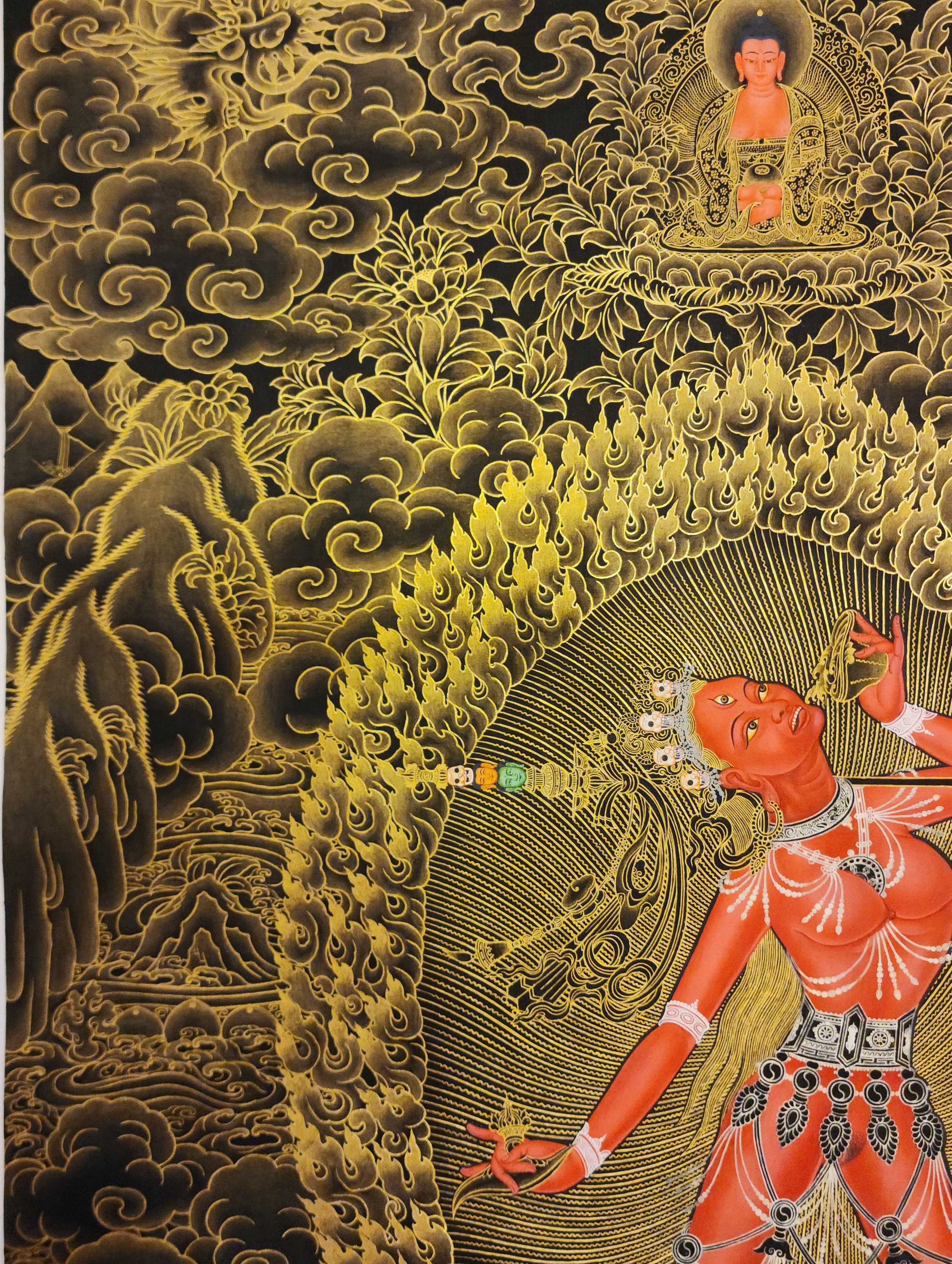 Master Quality, Buddhist Traditional Painting, Tibetan Style,
Master Quality, Buddhist Traditional Painting, Tibetan Style,  Real Gold" title="Yogini - Name Not Sure, Buddhist Handmade Thangka Painting,
Real Gold" title="Yogini - Name Not Sure, Buddhist Handmade Thangka Painting,  Real Gold" title="Yogini - Name Not Sure, Buddhist Handmade Thangka Painting,
Real Gold" title="Yogini - Name Not Sure, Buddhist Handmade Thangka Painting, 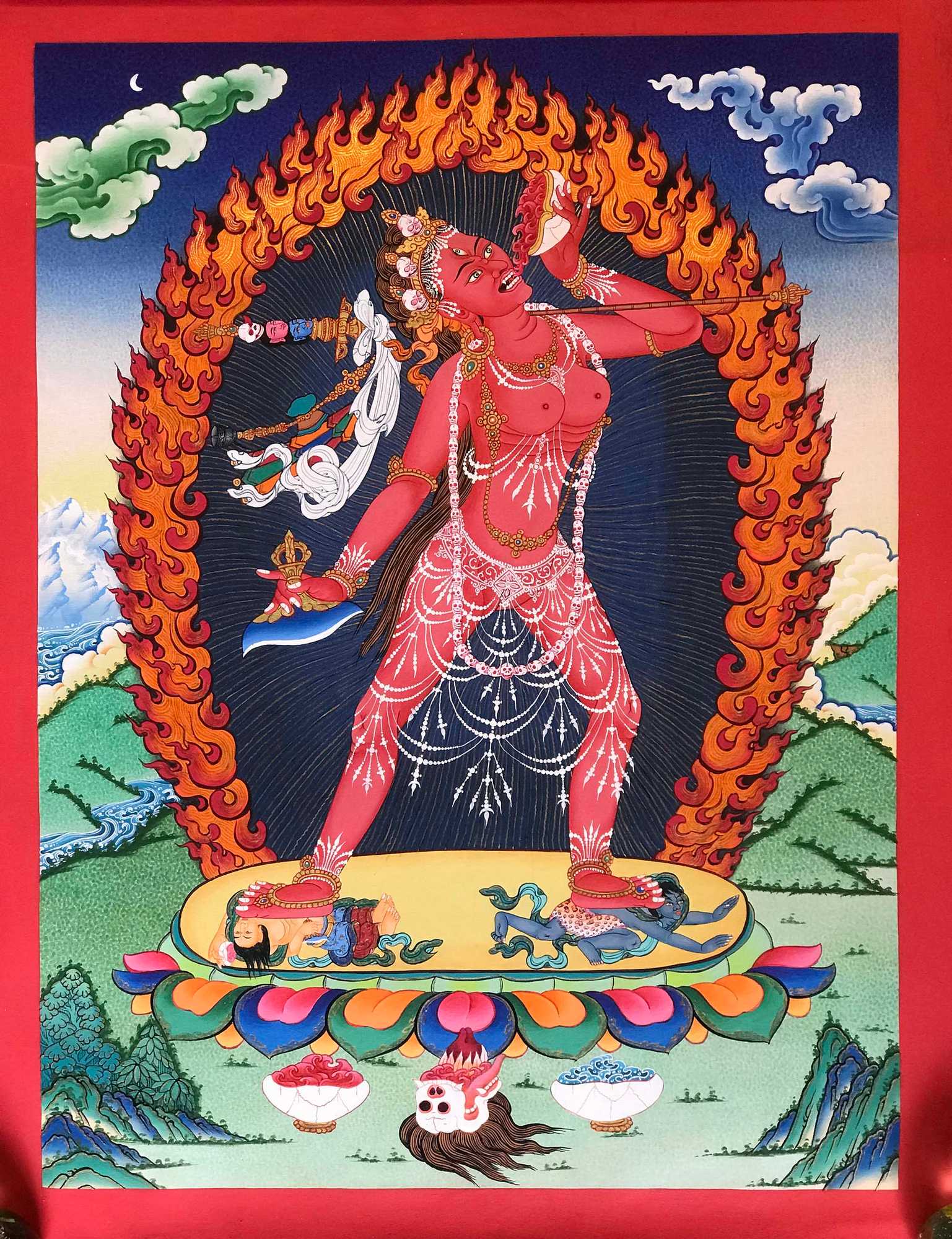 of Vajrayogini
of Vajrayogini 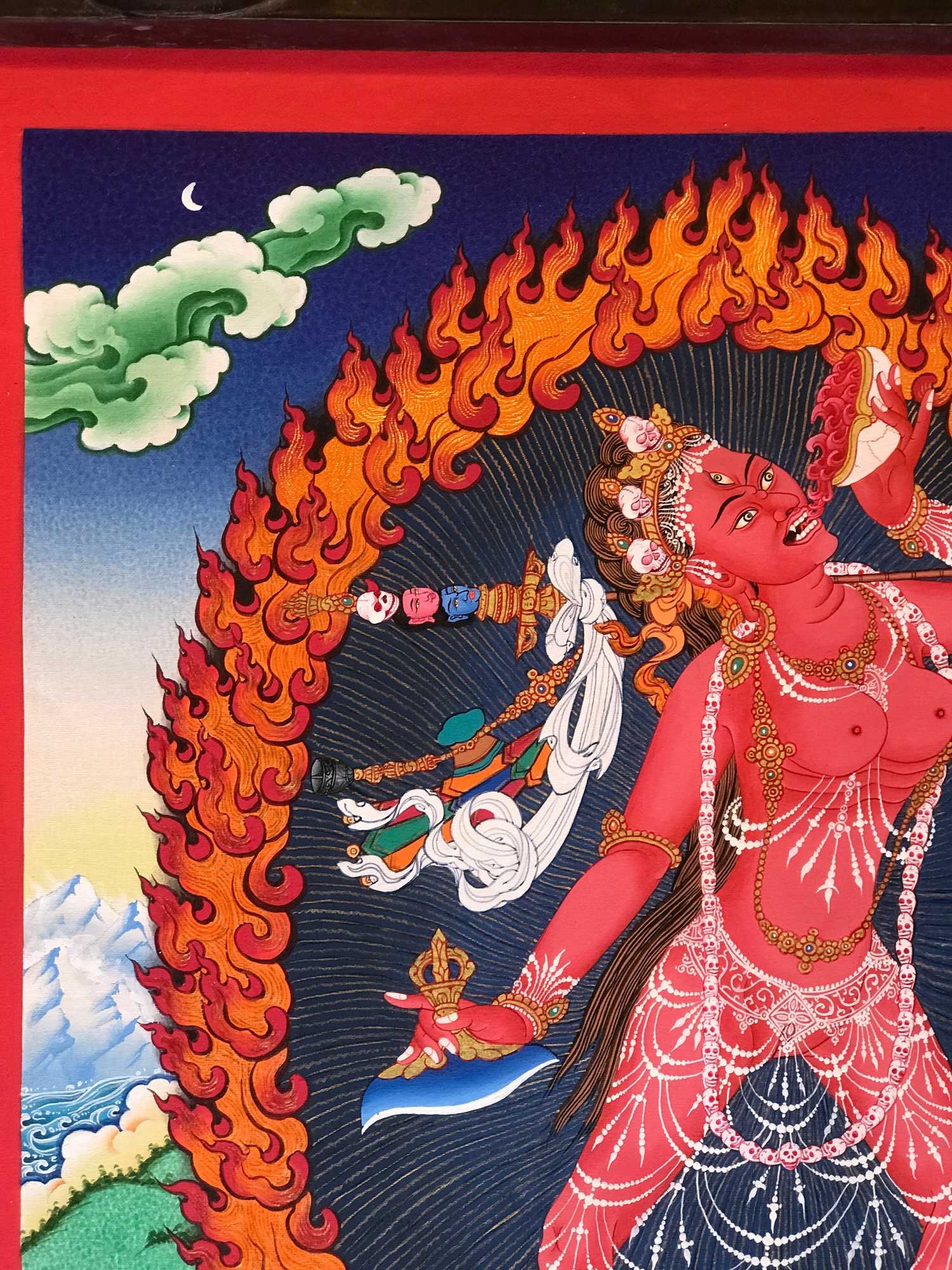 of Vajrayogini
of Vajrayogini